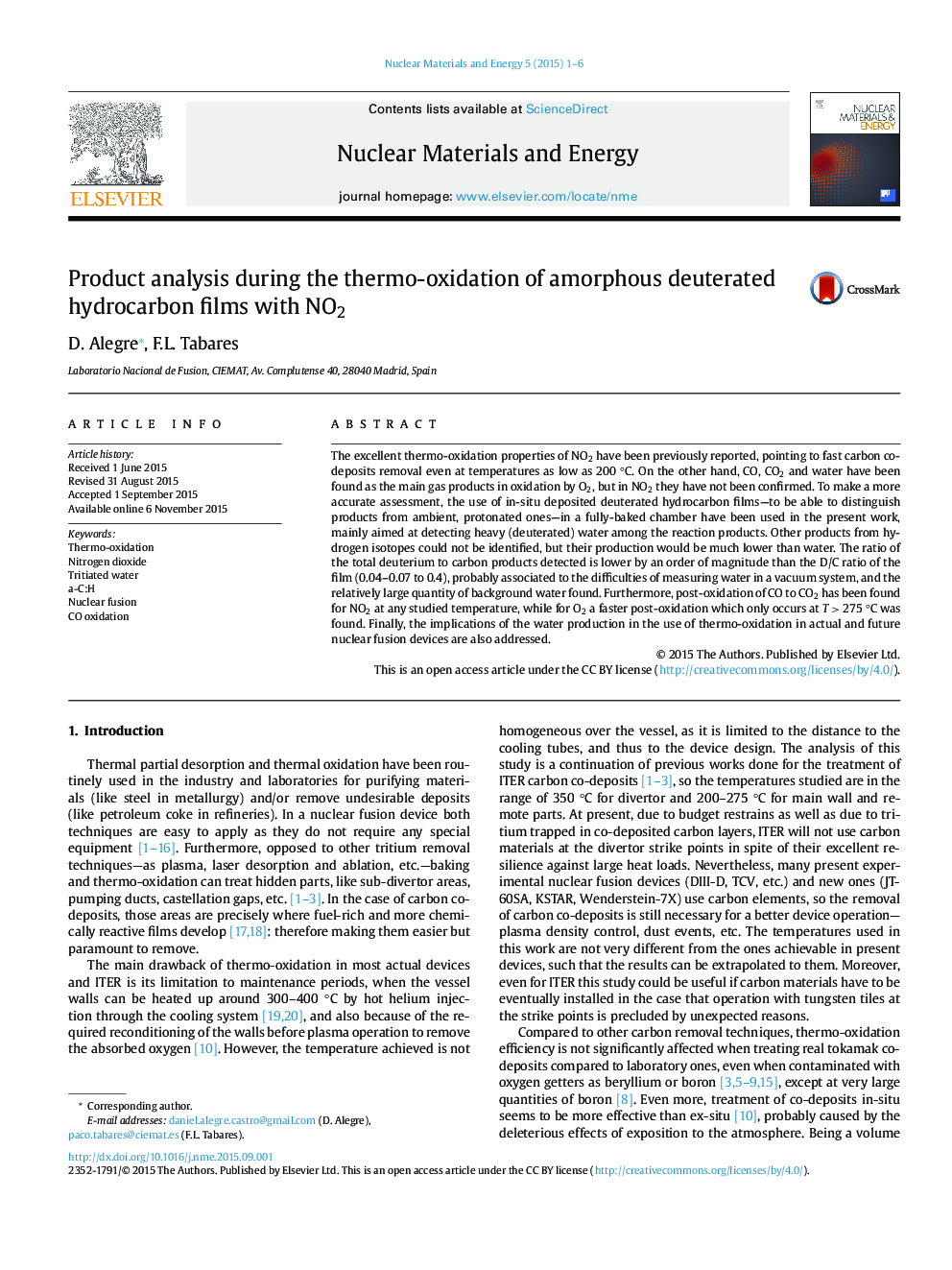| کد مقاله | کد نشریه | سال انتشار | مقاله انگلیسی | نسخه تمام متن |
|---|---|---|---|---|
| 1590307 | 1515285 | 2015 | 6 صفحه PDF | دانلود رایگان |

• Thermo-oxidation of hard a-C:H films with NO2 is effective even at 200 °C.
• Water, CO and CO2 are the main products from thermo-oxidation with NO2 and O2.
• Part of the produced water could not be detected in our vacuum system.
• Implications of water production in actual and future fusion reactors are discussed.
• Post-oxidation of CO to CO2 in NO2 at temperatures > 200 °C, and O2 at > 275 °C.
The excellent thermo-oxidation properties of NO2 have been previously reported, pointing to fast carbon co-deposits removal even at temperatures as low as 200 °C. On the other hand, CO, CO2 and water have been found as the main gas products in oxidation by O2, but in NO2 they have not been confirmed. To make a more accurate assessment, the use of in-situ deposited deuterated hydrocarbon films—to be able to distinguish products from ambient, protonated ones—in a fully-baked chamber have been used in the present work, mainly aimed at detecting heavy (deuterated) water among the reaction products. Other products from hydrogen isotopes could not be identified, but their production would be much lower than water. The ratio of the total deuterium to carbon products detected is lower by an order of magnitude than the D/C ratio of the film (0.04–0.07 to 0.4), probably associated to the difficulties of measuring water in a vacuum system, and the relatively large quantity of background water found. Furthermore, post-oxidation of CO to CO2 has been found for NO2 at any studied temperature, while for O2 a faster post-oxidation which only occurs at T > 275 °C was found. Finally, the implications of the water production in the use of thermo-oxidation in actual and future nuclear fusion devices are also addressed.
Figure optionsDownload as PowerPoint slide
Journal: Nuclear Materials and Energy - Volume 5, December 2015, Pages 1–6